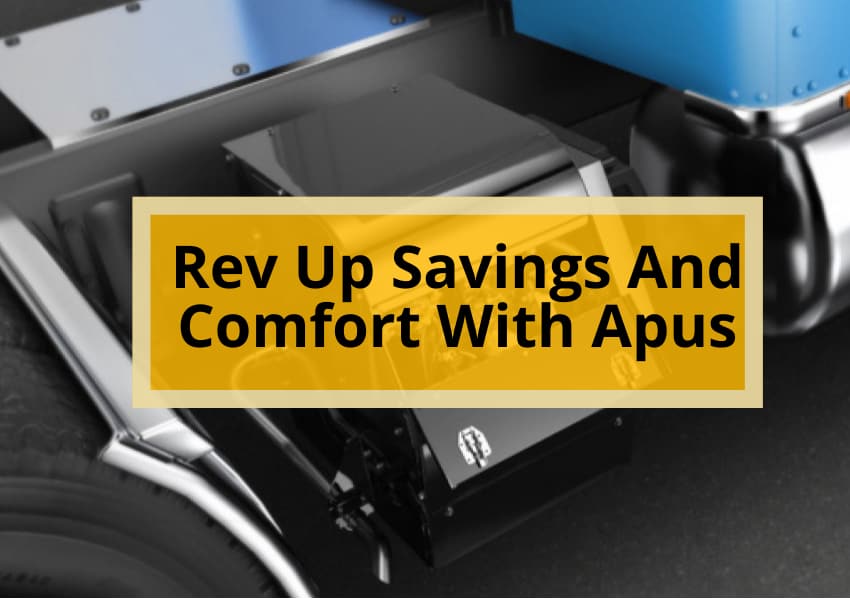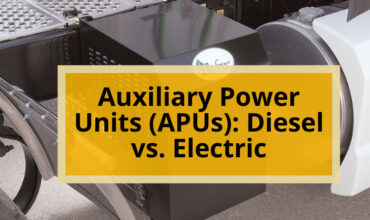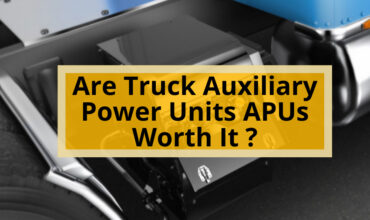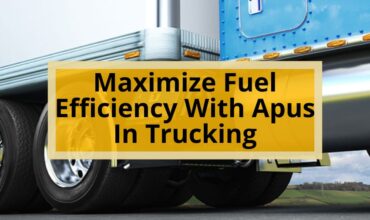Auxiliary Power Units (APUs) have become increasingly popular in the trucking industry due to their ability to cut costs and improve driver satisfaction. APUs are devices that provide power to in-cab appliances and health devices while reducing idling, resulting in fuel savings and extended engine life.
Despite the initial cost of APUs, the benefits they provide make them a worthwhile investment for fleets looking to save money and reduce their environmental impact. In this article, we will explore the benefits, types, and impact of APUs, and how they can improve fleet efficiency and driver comfort.
We will examine the different types of APUs available in the market, their features and functionalities, and how they can be customized to meet the specific needs of a fleet. Additionally, we will analyze the positive impact of APUs on fuel consumption, engine life, and the environment, as well as the potential cost savings for fleets that invest in this technology.
By the end of this article, readers will have a comprehensive understanding of the benefits of APUs and how they can help fleets optimize their operations and reduce their environmental footprint.
Benefits of APUs
The benefits of APUs, such as reducing fuel costs and improving engine performance, have been well-documented and can help fleets save money while also reducing their environmental impact. APUs can cost between $8,500 and $12,500, but their ROI from a fuel perspective takes about 2.5 years to recoup the cost.
APUs can extend the life of an engine and its components, improve engine performance, and reduce emissions. Additionally, APUs can help fleets track driver idling time, reduce fuel waste, and improve driver satisfaction by providing options for staying warm or cool.
Driver satisfaction is a crucial aspect of fleet management, and APUs can play a significant role in improving it. With more drivers using in-cab appliances and health devices that require constant power, APUs can reduce the need for idling, allowing fleets to reduce fuel costs and increase engine life.
APUs can reduce idle time during loading or unloading and help aftertreatment systems work more efficiently. By reducing the need for in-cab appliances and health devices to rely on the vehicle’s battery, APUs can also help improve driver satisfaction and reduce the impact of idling on the environment.
Overall, APUs can help fleets save money, reduce their environmental impact, and improve driver satisfaction, making them a valuable investment for any fleet.

Types of APUs
Fleets have the option to choose from either electric or diesel-powered auxiliary power units (APUs), with electric APUs being less expensive to purchase and maintain but facing battery life challenges in hot climates, while diesel-powered APUs can run indefinitely but come with a higher price tag. The choice between electric and diesel-powered APUs ultimately depends on a fleet’s specific needs and budget.
Electric APUs are a better option for fleets that operate in areas with strict emissions regulations and have shorter delivery routes, while diesel-powered APUs are ideal for long-haul trucking and can run for extended periods without requiring recharging.
To provide an overview of the differences between electric and diesel-powered APUs, here are three key points to consider:
- Electric APUs are less expensive to purchase and maintain, making them a more cost-effective option for fleets with limited budgets.
- Diesel-powered APUs can run indefinitely, allowing drivers to stay comfortable even during extended periods of idling.
- Fleets can take advantage of a weight allowance of up to 400 pounds, allowing them to add an APU without exceeding the maximum weight limit for their vehicles.
Overall, APUs offer significant benefits in reducing idling time, improving fuel efficiency, and enhancing driver satisfaction and retention, making them a worthwhile investment for fleets looking to improve their operations.
also read : Rving Without Limits: Why You Need A Generator
Impact of APUs
Idling is a common practice among truck drivers that can waste fuel and contribute to increased emissions, but the use of auxiliary power units (APUs) can significantly reduce the environmental impact of idling.
APUs can help fleets reduce their carbon footprint by reducing the amount of time that drivers spend idling their engines. This is particularly important in areas with strict idling regulations, where failure to comply can result in hefty fines.
By reducing emissions and improving fuel efficiency, APUs can help fleets reduce their environmental impact and comply with regulations. In addition to reducing emissions, APUs can also help improve driver retention.
Drivers spend a significant amount of time in their trucks, and having access to amenities such as heating, cooling, and electrical outlets can improve their comfort and overall job satisfaction. APUs can also help reduce the need for in-cab appliances and health devices to rely on the vehicle’s battery, further improving driver comfort.
By providing drivers with the amenities they need to stay comfortable and productive on the road, fleets can improve driver retention and reduce the costs associated with recruiting and training new drivers.
Frequently Asked Questions
What is the average lifespan of an APU?
To manage APU lifespan, proper maintenance is crucial. The average lifespan of an APU can vary depending on the make and model, but with regular maintenance, it can last up to 10,000 to 15,000 hours of operation. APU lifespan management is key to maximizing its benefits.
Are there any government incentives or rebates available for purchasing APUs?
There are government incentives available for purchasing APUs, such as the Environmental Protection Agency’s SmartWay program. Additionally, some financing options may be available through manufacturers or third-party lenders.
How do APUs affect the resale value of a truck?
APUs have a positive impact on the resale value of trucks due to the reduction in engine wear and tear, enhanced fuel efficiency, and the ability to offer a more comfortable in-cab experience compared to traditional HVAC systems.
Can APUs be retrofitted onto older trucks?
The feasibility of retrofitting APUs onto older trucks depends on the specific vehicle and its engine. Cost comparison analysis should be conducted to determine if the investment in retrofitting is worth the potential fuel savings and reduced engine wear.
What kind of maintenance is required for an APU?
Regular maintenance is required for APUs to ensure optimal performance. Troubleshooting tips include checking electrical connections, inspecting air filters, and monitoring refrigerant levels. Following manufacturer guidelines is essential for long-term APU use.






